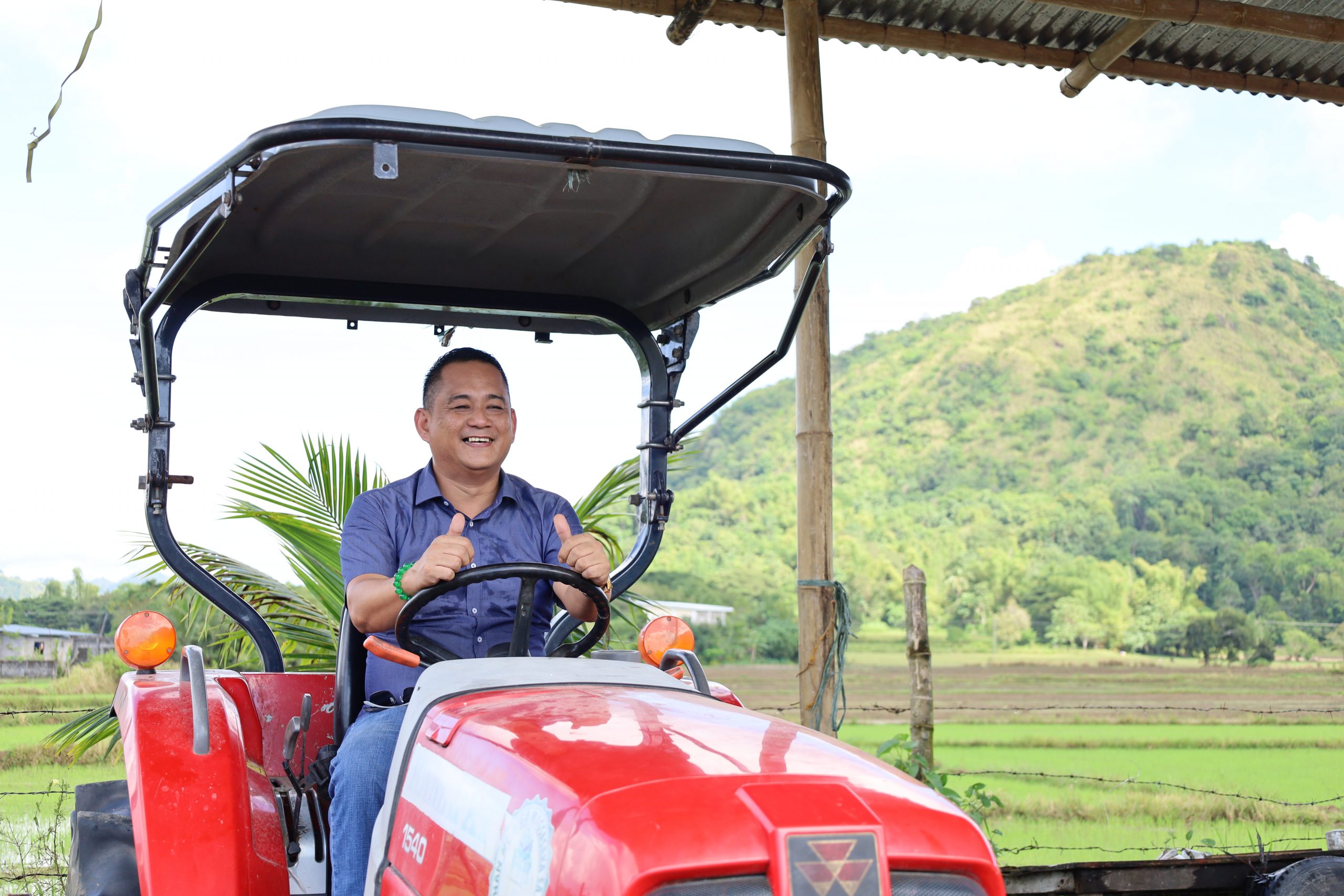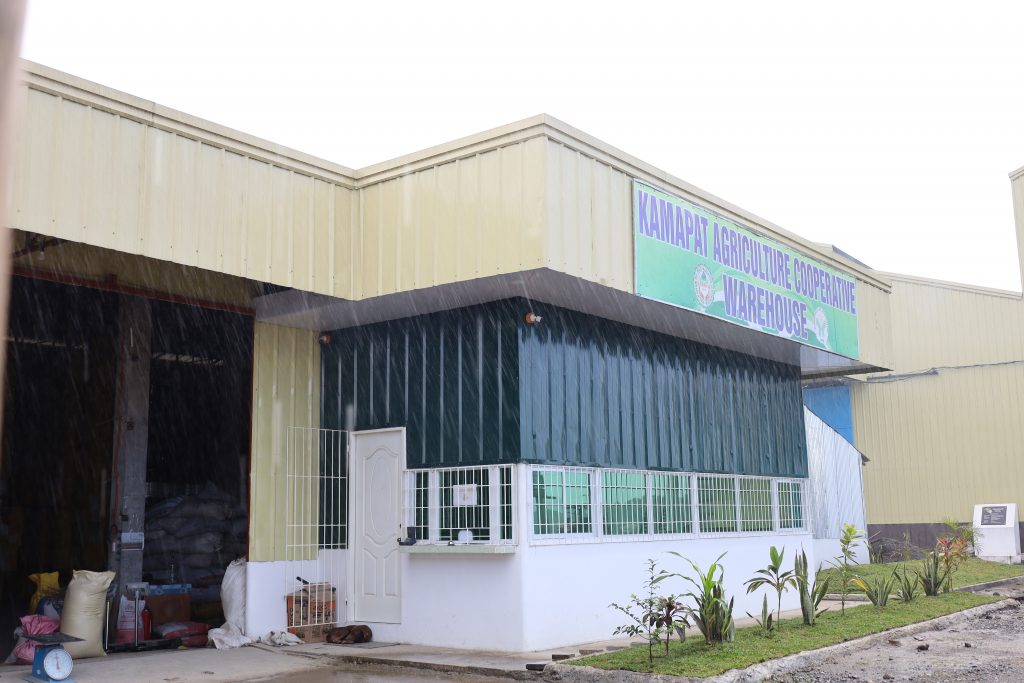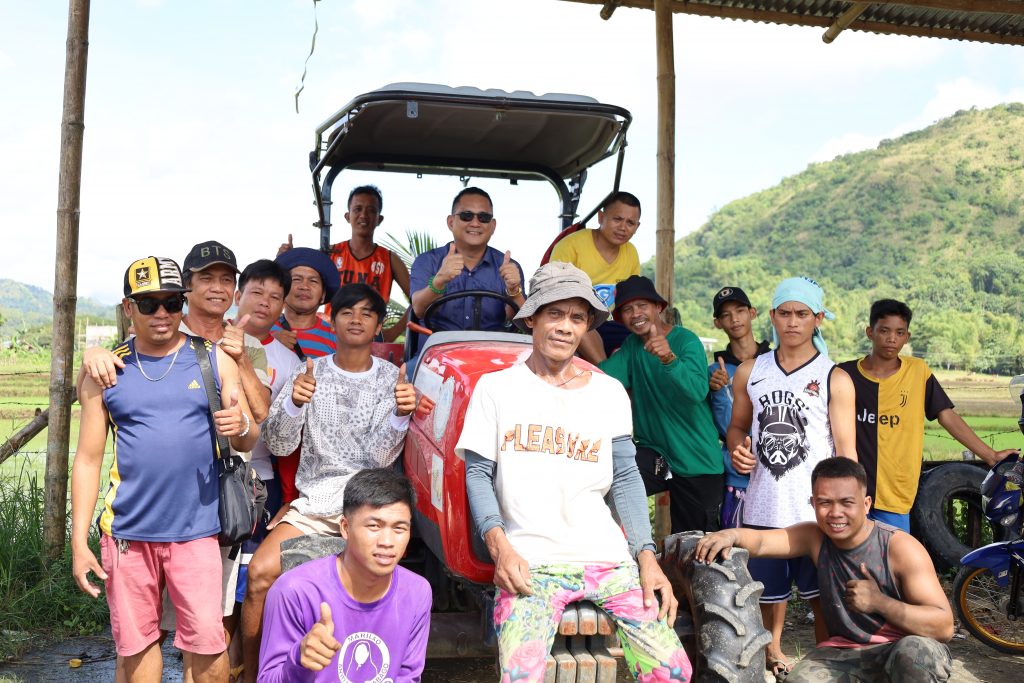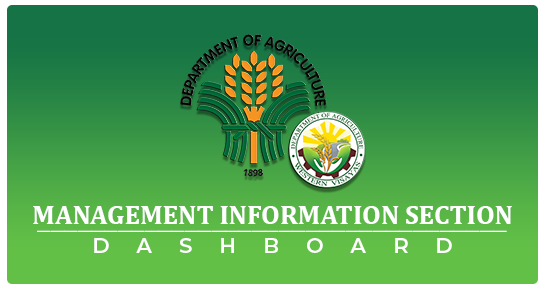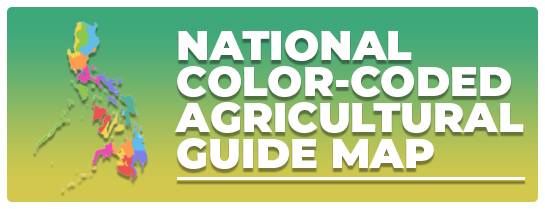Consolidating the gains in KAMAPAT’s rice value chain
Posted by: RAFIS DA6 | Posted at: November 23, 2023
It is past noon and the Bayanihan Tipon Center (BTC), a 200-square meter marketing hub in Patnongon, Antique is still bustling with activities. Trucks drive in offloading sacks of palay, corn, beans, copra and other farm produce to sell. A farmer, donned with a wide-brimmed hat and fabric-weathered long sleeved-shirt, cannot help but smile after receiving a hefty sum from the cashier’s window as payment for his hard-fought harvests. Meanwhile, a woman in her forties seemed satisfied with the low cost of poultry feeds she bought at the BTC.
In one corner, Henry Michael Gonzalo Doliguez, chairman of the KAMAPAT Agricultural Cooperative, breathed a sigh of relief. He is witnessing a scene he had once pictured when he founded KAMAPAT in 2019. Henry considered the federation of the 36 barangay farmers’ associations and seven irrigators’ associations in Patnongon as a move to encourage collective action, safeguard farmers from unfair pricing and manipulation, and maintain affordable prices for agricultural commodities.
The KAMAPAT’s goal of empowering and sustaining local farmers was realized when the Department of Agriculture (DA) and the Korea International Cooperation Agency (KOICA) tapped the association as the marketing partner and a recipient of the BTC that functions as the consolidation and marketing hub for both upland and lowland products.
Henry relayed that their primary aim is to shift farmers’ glance at agriculture as a profitable enterprise. Farmers in Patnongon decry soaring prices of farm inputs, low availability of free seeds and fertilizer, and the plunging farm-gate value of their hard-labored commodities. Just like other farmers’ organizations emerged from scratch and with not enough capitalization to depend on, KAMAPAT had to surmount resource limitations and constraint opportunities. Their struggles were not merely financial; they also included overcoming skepticism and fostering trust among members. With the government’s support and interventions, KAMAPAT transformed into a proficient farmers’ organization, meeting the needs of various stakeholders. The government’s support has not only facilitated the creation of KAMAPAT but also helped promote farmers’ interests and enhance cultivation practices.
KAMAPAT was also equipped with operating capital and a trucking vehicle from KOICA. Assisting farmers with logistics is a strategy to decrease the costs they face when transporting their agricultural products to the market due to the challenges posed by poor roads and limited transportation networks.
Henry assessed how various elements in the agricultural supply chain are connected to ensure sustainable and profitable farming. Implementing science-based practices can reduce production costs and bridge the yield gap in rice farming.
By establishing BTC, Patnongon farmers gained access to a stable market where they could sell their produce at advantageous prices. Farmers were once at the mercy of traders who controlled buying prices for their produce, leading to unfair compensation for their hardwork.
KAMAPAT had speedily advanced its growth in establishing a steady and sustainable marketing system through the aid of the DA’s Kadiwa ni Ani at Kita Financial Grant Assistance Program. In 2020, DA Agribusiness and Marketing Assistance Division extended P1-million financial capital, which expanded the KAMAPAT’s capacity to procure farm products from small and marginal farmers in Patnongon. Their good standing in the utilization of the financing aid also enabled them to access the P1-million Survival and Recovery Aide (SURE-AID) Loan Program from the DA-Agricultural Credit Policy Council. This financial support, designed to facilitate the recovery and sustainability of small-scale businesses, comes in the form of a zero-interest loan, with a manageable repayment period of five years. KAMAPAT, as the recipient of this loan, was poised to leverage the funds to enhance and expand its existing marketing projects. The injection of capital into these initiatives is expected to not only stimulate local economic activity but also fortify the association’s capacity to reach a broader market.
According to Henry, farmers in Patnongon resort to buying expensive agricultural inputs from private traders because there are only a few agricultural stores in the municipality. To address the concern, KAMAPAT utilized the P500,000.00 for the procurement of agricultural supplies such as seeds, fertilizers, herbicides, pesticides, animal feeds and biologics. The remaining P300,000.00 were allocated for the palay procurement and P200,000.00 for the various agricultural commodities for their Kadiwa display.
Crucial also to the advancement of rice farmers in Patnongon is the high utilization and adoption of modern farm tractors and equipment as it optimizes farm operations and reduces production costs of farmers, making rice cultivation more efficient and sustainable in the municipality. KAMAPAT became a recipient of several farm tractors such as the rice combine harvester, mobile dryer, and four-wheel-drive tractors that are all beneficial to association members and non-members.
“We offer farm mechanization services from land preparation to harvesting to our farmers at affordable costs. Our service rate for the four-wheel-drive tractor is only P1,000 per hectare for the laborers or operators and P1,000.00 for the maintenance of tractors. The diesel fuel needed for the operation shall be shouldered by farmers accessing the service,” Henry shared.
Although most private service providers in Antique charge between P12,000.00 and P15,000.00 per hectare for their mechanical transplanter services and rice combine harvester services, those opting for KAMAPAT’s ride-on type transplanter will only incur a cost of P4,000.00 per hectare. Farmers can also enjoy significant savings by utilizing KAMAPAT’s combine harvester, priced at P7,000.00 per hectare, compared to the typical charges of private businessmen ranging from P12,000.00 to P15,000.00 per hectare.
Clustering and consolidation approaches are imperative in the pursuit of increased farm efficiency through synchronized operations and cost reduction. Rice farmers employ synchronous planting and following a common schedule of land preparation, field irrigation and harvesting promise streamlined processes, optimized resource allocation, and enabled higher production output. With KAMAPAT steering the members to adhere to the recommended practices and science-based techniques in rice cultivation, farmers obtained positive gains and drive to continue planting.
“Farmers sowing high quality inbred and hybrid seeds provided by the government enabled a significant increment in their harvest from the average 75-80 sacks per hectare to 120-140 sacks per hectare. We recorded an increase in production volume because farmers no longer resort to using home-saved seeds or seeds they exchanged with other farmers,” shared Henry.
Henry’s vision of progress extends beyond production, as he and other KAMAPAT officials explored other tangible means to aid farmers recover from losses, high costs of inputs, and negative impact of the changing climate. In 2021, KAMAPAT embarked on the “Plant Now Pay Later” Program to address the financial constraints that often hinder small-scale farmers from adopting modern farming practices and utilizing high-quality seeds, adequate fertilizers, and appropriate pesticides on their crops.
“Our farmers encountered problems in the increasing cost of production inputs, causing them to access capitalization from private lenders and traders despite huge interest rates,” added Henry.
Compelled to capacitate smallholder farmers to continue planting, KAMAPAT devised the program easing the financial burden faced by rice growers. Members can access inputs — seeds, fertilizers, and pesticides and defer payment without single interest until the crop harvest. Moreover, by providing farmers with financial means to push through their rice production, farmers are no longer bound to sell their produce to traders they owed financing capital from at the expense of lower pricing for their commodities.
“KAMAPAT solved farmers’ problem on the lack of capital and offered a guaranteed market for their produce, coupled with a commitment to fair pricing. Our goal is to buy palay and other commodities from farmers at a favorable farm gate price and provide them to consumers at an affordable rate,” said Henry.
According to Henry, KAMAPAT Agricultural Cooperative is buying more or less 1,000 bags of palay from local producers daily, process them into milled rice and deliver to 87 Bugasan sa Barangay outlets in Patnongon, Hamtic, Sibalom, Anini-iy, Tobias Fornier, San Jose, Valderrama, San Remigio, Barbaza, and Caluya. They also supply and deliver rice to different towns in Southern Iloilo and Malay, Aklan.
“We came up with this initiative in July 2019 to help local farmers and consumers save on their transportation expenses when bringing their products to the market or buying their necessities. The Bugasan is being managed by the barangay’s farmers association who inked a consignment marketing agreement with KAMAPAT. Each barangay has a designated area for the Bugasan where villagers have access to affordable and quality rice,” explained Henry.
The Bugasan sa Barangay initiative not only provides a guaranteed market for farmers’ consolidated palay harvests but also contributes to revenue generation of the municipal government as KAMAPAT caters to a wider market reach outside Patnongon for milled rice distribution.
The ingenuity and resourcefulness of the KAMAPAT in all its services and operations prodded higher patronage and trust among farmer-members.
“We complement the training and technical assistance being provided by the Municipal Agriculture Office to our local farmers. We tap our suppliers of agricultural inputs to discuss with farmers site-specific planting protocols and introduce best practices to manage pests and ensure optimum production and yield,” Henry added.
Moreover, KAMAPAT is also instrumental in transforming farmers’ perspectives toward farming as an equitable, sustainable, and profitable enterprise. Advancing environmentally conscious production practices not only secures current yields but also safeguards the agricultural resources for future sustenance.
With KAMAPAT’s outstanding track record in the utilization of farm tractors, they became a recipient of two units rice combine harvester, four units four-wheel-drive tractor, two recirculating dryers, and one unit each of corn sheller and hammer mill from 2019 to 2022 from the Department of Agriculture, National Food Authority, and Provincial Agriculture Office of Antique.
The association is also privileged to have been granted by the DA Rice Program with a P12.14-million worth of warehouse facility. This state-of-the-art facility, located in Brgy. San Rafael, is strategically positioned to cater to 5,592 hectares of rice farms, further enhancing the cooperative’s capacity to support local agriculture and boost clustering and consolidation thrusts for the rice sector.
KAMAPAT also envisioned gaining support from the national government for the repair and construction of farm-to-market roads to ease the drudgery in the hauling of palay and other farm products to the market. Henry also acknowledged the necessity of continuously upskilling farmers with new and emerging technologies. Thus, KAMAPAT came up with the plan to convert their area in Brgy. San Rafael as a learning site for agriculture by the Agricultural Training Institute. This will provide local farmers with closer access to technical information that would help them cope with the changing climate that affects productivity and income generation.
With the interventions from the DA’s Farm and Fisheries Clustering and Consolidation (F2C2) Program, Patnongon farmers will be able to delve deeply into the key approaches to crop management clustering, use appropriate technologies and farm mechanization tools to boost their production and yield. KAMAPAT Agricultural Cooperative hopes that the F2C2 Program would allow funding for the provision of a package of interventions for identified rice farmer clusters.
After participating in the International Rice Congress in October 2023, Henry realized the need for KAMAPAT to invest in the improvement of packaging and labeling of their milled rice products to enhance consumer awareness and ensure food safety. By clearly conveying the pertinent information in the packaging material such as rice variety, net weight, source, nutritional benefits and product value, KAMAPAT rice will achieve better brand recognition and customer patronage not only here in the region, but in a broader market spectrum.
“We aim to provide our customers with a variety of choices, offering KAMAPAT rice in convenient 2, 5, 10, and 20-kilogram packages. By combining quality milling, various packaging sizes, and visually appealing design, our proposal seeks to establish KAMAPAT as a preferred choice for consumers seeking premium and convenient rice options,” said Henry.
KAMAPAT, as an accredited Civil Society Organization in Patnongon, Antique has brought reforms, securing more than just immediate gains for local farmers. The actual plight of local producers prompted KAMAPAT to intervene proactively and formulate measures that propel advancement in the rice value chain of Patnongon farmers. ### (Texts by Sheila Mae Toreno/Photos by Ann Marie Tabura/DA-RAFIS 6)


